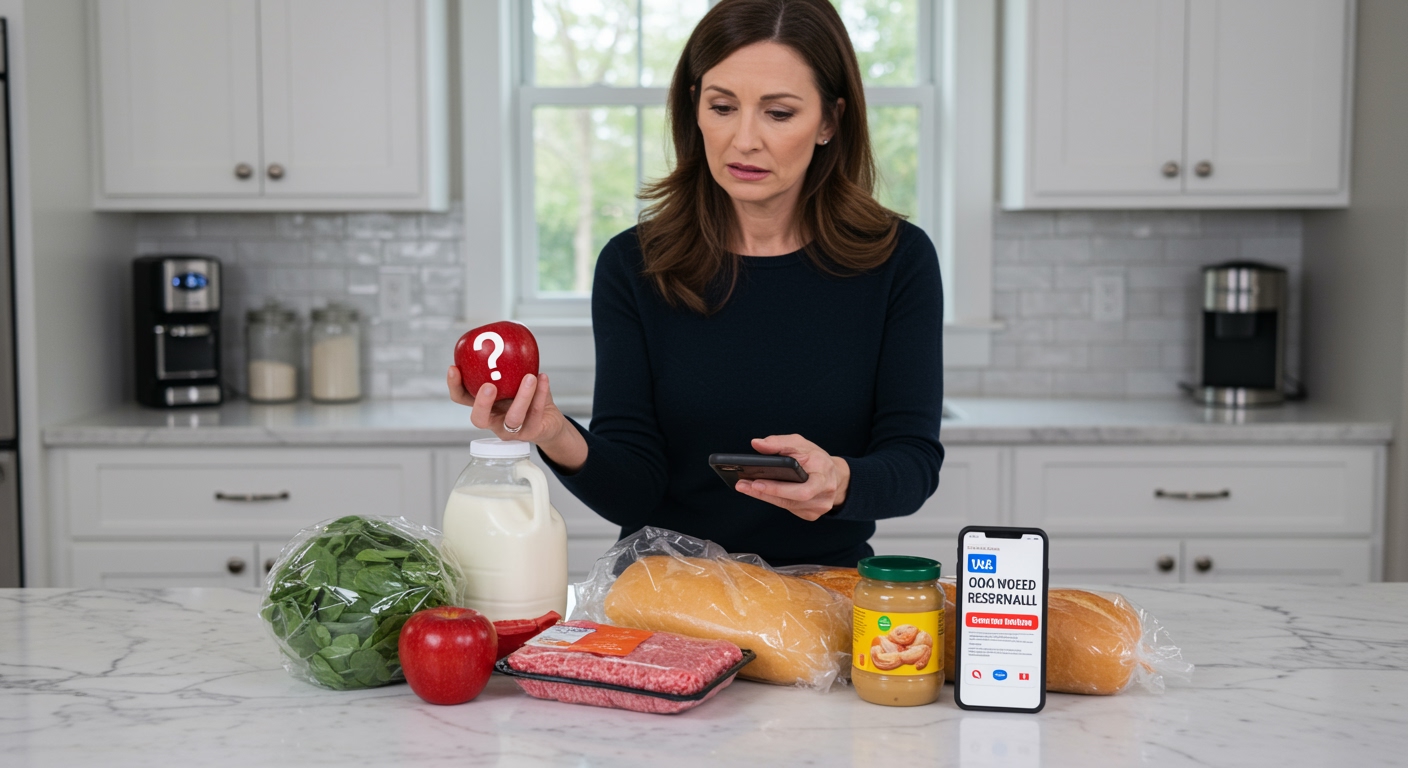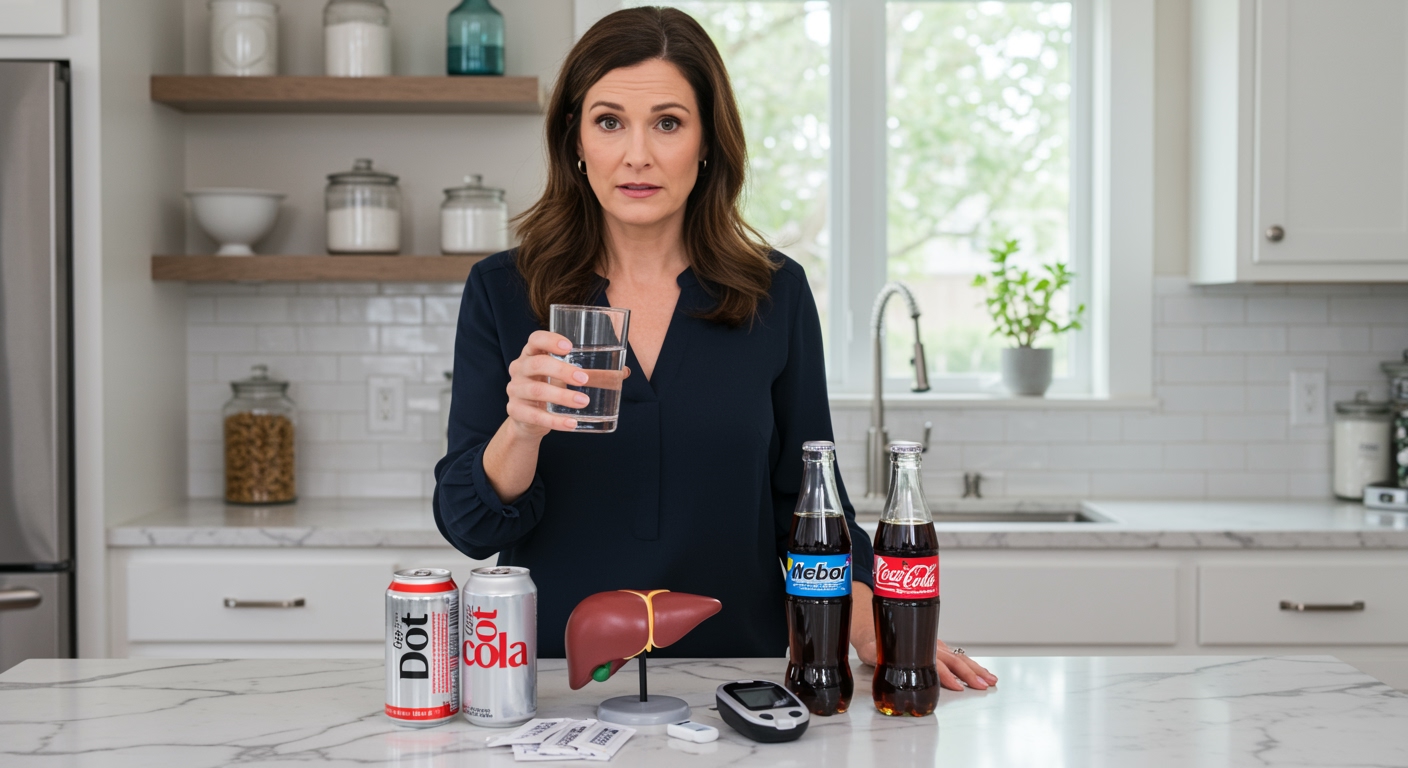✪ Key Highlight: American food safety confidence drops to historic low of 55%, sparking nationwide concern about government oversight.
Introduction
Your trust in the food you eat every day is crumbling faster than ever before.
A shocking new survey reveals that only 55 percent of Americans now feel confident about their food supply, marking the lowest point in recent memory and signaling a crisis of trust that affects every grocery store visit.
Hi, I’m Abdur, your nutrition coach and today I’m going to analyze this alarming decline in food safety confidence and what it means for your daily eating decisions.
What Does This Confidence Drop Really Mean?
The numbers tell a story that should concern every American family.
According to the International Food Information Council’s 20th annual Food and Health Survey, confidence in food safety has plummeted from 70 percent in 2023 to just 55 percent in 2025.
Even more troubling is the dramatic drop in Americans who feel “very confident” about their food.
This number crashed from 24 percent in 2022 to a mere 11 percent in 2025.
The decline affects nearly every demographic group, but hits hardest among Generation Z, higher-income households, men, and Asian Americans.
A separate Gallup poll confirms this trend, showing that only 53 percent of Americans trust the federal government to ensure food safety.
This represents a massive drop from 76 percent in 2000 and 68 percent as recently as 2019.
✪ Fact: Food safety confidence has dropped 15 percentage points in just two years, the steepest decline ever recorded.
Why Are Americans Losing Trust In Their Food?
The erosion of trust stems from multiple factors that have converged into a perfect storm of doubt.
Food recalls and contamination incidents now make headlines with alarming frequency, creating a constant drumbeat of safety concerns in the public consciousness.
Each recall notice that appears on your phone or in the news reinforces the perception that our food system is failing.
Political polarization has also played a role, with experts noting growing skepticism particularly among Democratic voters about government oversight capabilities.
The complexity of modern food production adds another layer of uncertainty.
Global supply chains mean your dinner might include ingredients from dozens of countries, each with different safety standards and regulatory oversight.
New food technologies and processing methods create unfamiliar products that consumers struggle to understand and trust.
✪ Pro Tip: Sign up for FDA recall alerts to stay informed about food safety issues affecting products in your area.
What Role Does Climate Change Play In Food Safety?
Climate change is creating entirely new challenges for food safety that most consumers never consider.
A 2025 study published in Comprehensive Reviews in Food Science and Food Safety highlights how environmental changes are making food production more unpredictable.
Rising temperatures and changing weather patterns create ideal conditions for harmful bacteria and toxins to flourish in crops.
Extreme weather events like floods and droughts can contaminate farmland with pollutants or force farmers to use emergency measures that compromise safety protocols.
The push toward plant-based foods, while often healthier, has introduced new concerns about pesticide residues.
In the United States, over half of all food samples tested contain multiple pesticides, and scientists still do not fully understand how these chemicals interact with each other in your body.
Urbanization and political instability in food-producing regions add additional layers of complexity to maintaining consistent safety standards.
✪ Note: Washing fruits and vegetables thoroughly can remove many surface pesticides, but some chemicals penetrate deeper into the produce.
Does Organic Food Really Offer Better Safety?
Many consumers turn to organic foods believing they offer superior safety, but the reality is more complicated than marketing claims suggest.
While organic farming restricts synthetic pesticides and fertilizers, it does not eliminate all safety risks associated with food production.
Organic foods can still harbor harmful bacteria like E. coli or Salmonella, especially if contaminated during processing or handling.
The same 2025 research study points out that there is not yet clear evidence that organic foods are less risky than conventionally grown foods that follow established safety regulations.
Both organic and conventional foods must meet the same FDA safety standards for bacterial contamination and other health hazards.
The key difference lies in the types of chemicals used during production, not necessarily the overall safety profile of the final product.
Your best protection comes from proper food handling, storage, and preparation practices regardless of whether you choose organic or conventional options.
✪ Pro Tip: Focus on proper food handling and cooking temperatures rather than relying solely on organic labels for safety.
How Can Trust In Food Safety Be Restored?
Rebuilding American confidence in food safety requires coordinated action from government agencies, food companies, and consumers themselves.
According to the survey, four in ten consumers say they would feel more confident if they better understood how government and food companies ensure safety protocols.
This suggests that education and transparency, not just stricter regulations, hold the key to restoring trust.
Wendy Reinhardt Kapsak, President and CEO of the International Food Information Council, emphasizes that Americans are asking for more transparency and collaboration across the entire food system.
Food companies need to communicate more clearly about their safety testing procedures, supply chain management, and quality control measures.
Government agencies must provide more accessible information about how they monitor food safety and respond to contamination threats.
As consumers, you can take control by reading ingredient labels, staying informed about recalls, and supporting companies that prioritize transparency in their operations.
✪ Note: Companies with detailed safety information on their websites often demonstrate higher commitment to food safety standards.
The Bottom Line
The dramatic decline in American food safety confidence reflects genuine concerns about our increasingly complex food system, but it also presents an opportunity for meaningful reform.
Trust is earned through transparency, maintained through consistency, and restored through honest communication about both successes and failures in food safety.
I would love to hear your thoughts on this concerning trend – have you noticed changes in your own confidence about food safety, and what steps do you take to ensure your family eats safely?
References
At NutritionCrown, we use quality and credible sources to ensure our content is accurate and trustworthy. Below are the sources referenced in creating this article:
- Food Safety News: Confidence in U.S. Food Safety Hits an All-Time Low
- Ground News: Gallup Poll Trust in Food Safety Regs at Record Low
- AOL: Fewer Americans Ever Confident Food
- PMC: Food Safety Research Article
- Meat + Poultry: Consumers Confidence in US Food Safety Drops





